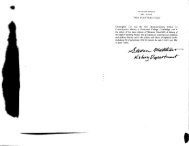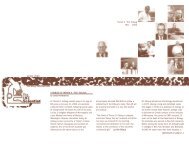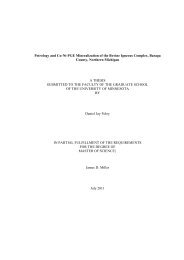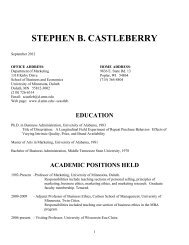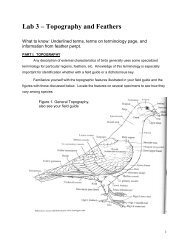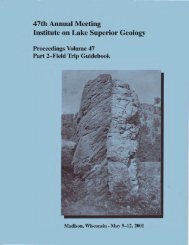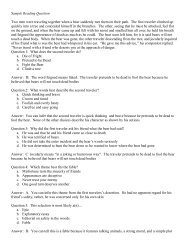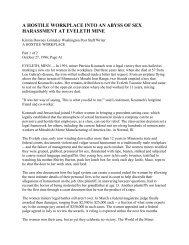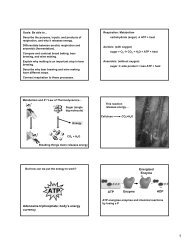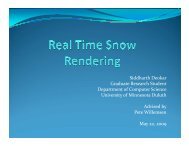Program, Abstracts, and Guidebooks - University of Minnesota Duluth
Program, Abstracts, and Guidebooks - University of Minnesota Duluth
Program, Abstracts, and Guidebooks - University of Minnesota Duluth
Create successful ePaper yourself
Turn your PDF publications into a flip-book with our unique Google optimized e-Paper software.
—93—<br />
(3) 'flow—layering' exhi)bited by anatexite<br />
are parallel to the contact <strong>and</strong> contact<br />
irregularities.<br />
C) presence <strong>of</strong> areas <strong>of</strong> breccia development.<br />
These field relations, schematically illustrated in<br />
Fig. 3, can best be explained by assuming the peripheral<br />
development <strong>of</strong> migma ,in the country rocks surrounding<br />
the cupola <strong>of</strong> gabbro.<br />
Breccia development appears to be, in part, the<br />
product <strong>of</strong> an irregular cooling history involving magma<br />
pulsatidn followed by fissuring <strong>and</strong> intrusion <strong>of</strong> more—<br />
peripheral areas.<br />
Note the abundant xenoliths in the gabbro (apparently<br />
reflecting the 'high' level <strong>of</strong> cupola exposure); the<br />
rheomorphic dikes <strong>of</strong> granophyre with tourmaline±prehnite<br />
in the anatexites; <strong>and</strong> dikes <strong>of</strong> laurvikite in the gabbros.<br />
The laurvikite dikes commonly show;<br />
(1) angular inclusions <strong>of</strong> gabbro,<br />
obviously locally derived;<br />
(2) contact relations indicative <strong>of</strong><br />
emplacement during periods <strong>of</strong><br />
extension;<br />
(3) composite appearance.<br />
Thin âections <strong>of</strong> the anatexites show porphyroblasts <strong>of</strong><br />
•(in decreasing order <strong>of</strong> relative abundance); clinopyroxene,<br />
IC—spar, quartz, orthopyroxene (Fs 25—35), biotite, oxides,<br />
<strong>and</strong> sulfides. l4ineralogically the anatexites lie within<br />
the orthopyroxene clinopyroxene — plagioclase triangular<br />
field <strong>of</strong> an ACF plot for the pyroxene—honfels fades.<br />
Physical <strong>and</strong>/or optical alignment <strong>of</strong> some <strong>of</strong> the minerals<br />
especially plagioclase (An20 to An40), is not uncommon.<br />
The gabbros vary from fine to coarse grained but all<br />
varieties are essentially anhydrous two pyroxene gabbros<br />
with or without phenocrysts <strong>of</strong> plagioclase <strong>of</strong> (An65_70).<br />
The medium to coarse gabbros <strong>of</strong> 'Inner Border Zone A' show.<br />
anomalous amounts <strong>of</strong> quartz <strong>and</strong> K—spar, probably due to<br />
assimilation.<br />
OO<br />
Thin sections <strong>of</strong> the syenite dikes, generally composite,<br />
show perthites (generally extensively exsolved, patch<br />
perthite) with varying proportions <strong>of</strong> aegirine—augite,<br />
riebeckite, calcite, zircon, fluorite, quartz, <strong>and</strong> oxide<br />
(ilmenite ± magnetite). These dikes are considered to be<br />
apophyses from the main body <strong>of</strong> laurvikite.<br />
Turn round <strong>and</strong> proceed north towards Marathon.




